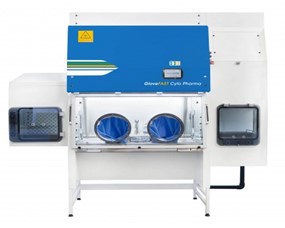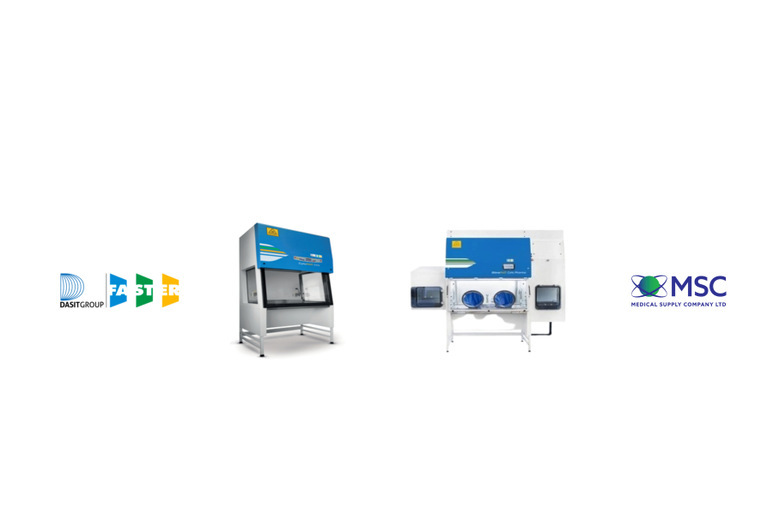Cytotoxic Isolators vs. Class II Cytotoxic Cabinets: What you need to know!
Cytotoxic medications are therapeutic agents commonly used for, but not limited to, the treatment of cancer. Most cytotoxic drugs are administered via injections or infusions, which means sterile conditions must be maintained during the preparation and administration of chemotherapy, particularly because many patients are immunocompromised. Protecting pharmacy staff from occupational exposure is also of utmost importance as cytotoxic drugs are known to be highly toxic and potentially harmful to health.
The primary difference between cytotoxic Class II cabinets and isolators lies in their design and level of containment. Cabinets provide operator and environmental protection, but they do not offer complete isolation from the external environment. Isolators, on the other hand, provide a fully enclosed system that isolates both the operator and the cytotoxic materials being handled. Isolators are generally considered to provide a higher level of protection due to their closed system design.
The choice between a cytotoxic Class II cabinet and cytotoxic isolator depends on several factors, including the nature of the work, the level of containment required, and the specific protocols and regulations in place. Both options have their advantages and limitations, and it is essential to evaluate the specific needs and risks to determine the most appropriate solution for a particular setting. In this blog we will compare and highlight the differences between cytotoxic cabinets and isolators.
Product Protection
For processes such as the reconstitution of vials, liquid transfer and dilution to prepare pre-filled syringes or infusion bags, both class II cabinets and the isolators will provide environments corresponding to EUGMP Grade A conditions. However, class II cabinets are more vulnerable to changes in airflow within close proximity to the cabinet which can be caused by movement around the aseptic suite. Movement near the front of the cabinet can disrupt the laminar airflow at the open face and draw in air from outside the aseptic zone. In contrast, hatches on the side of isolators allow for transfer of equipment and materials in and out of the internal chamber via a flushed hatch system with interlocking doors, ensuring the maintenance of aseptic conditions. One limitation of isolators when compared with Class II cabinets is that they can be more difficult to clean and to sanitise internal surfaces.
Operator Protection
Both Class II cabinets and isolators discharge air outside of the isolator through one or two HEPA filters, and then ideally to the outside of the building via fan-assisted external ducting. As with product protection, the open nature of class II cabinets present the potential for air to drift from inside the cabinet to the external environment due to disruption to laminar flow and thus the “protective curtain” due to movements close to the face of the cabinet.
Naturally, operators tend to “feel safer” when working with an isolator as there is a physical barrier between them and the drugs they are working with. There can be a false sense of security when working with positive pressure isolators as any leak can result in contaminated air being pumped into the ambient environment potentially exposing the operator to toxic agents. Unlike positive pressure devices, in the event of a leak, negative pressure isolators result in air being drawn into the chamber. This will result in contaminated product but will protect the operator. This can be a reason for preference of negative pressure over positive pressure isolators.
MSC’s partner FASTER manufacture both class II cytotoxic cabinets as well as cytotoxic isolators via the CytoFAST and GloveFAST range. These units can delivered as standard or bespoke models with a comprehensive range of optional accessories to meet the requirements of any customer.
CytoFAST Elite class II cytotoxic cabinets

The CytoFAST Elite range of cabinets are class II cytotoxic cabinets – designed and built to performance requirements of the EN 12469:2000 European standard and DIN 12980:2016 standard. They incorporate triple filter technology with 100% of the air filtered via the main H14 HEPA/ULPA filter directly below the work surface and then 70% of the air re-circulated via the recirculating H14 HEPA/ULPA filter within the cabinet, whilst the remaining 30% is discharged through an exhaust H14 HEPA/ULPA filter. The “bio-dynamic sealing system” of the negative pressure plenum ensures that all contaminated particles are kept inside the system and are automatically drawn to the plenum or pressure chamber to be captured by the main re-circulating and exhaust filters.
- Work surface: 316L stainless steel
- Electrically operated sash window.
- ECS® system; improved energy efficiency
- Near silent operation.
| Model Type | CytoFAST Elite 209 | CytoFAST Elite 212 | CytoFAST Elite 215 | CytoFAST Elite 218 |
| Overall Dimensions (W×H×D, mm) | 1045 x 2345 855 | 1350 x 2345 x 855 | 1655 x 2345 x 855 | 1960 x 2345 x 855 |
| Useful Dimensions (W×H×D, mm) | 887 x 740 x 580 | 1192 x 740 x 580 | 1497 x 740 x 580 | 1802 x 740 x 580 |
GloveFAST Cyto Pharma Isolators

The GloveFAST Cyto Pharma range consists of negative pressure isolators – 2 and 4 glove option. Ambient air is drawn in through an H14 HEPA filter located on top of the transfer chambers and forced into the working area of the transfer chambers. The air is then drawn through the main blower and a second HEPA filter. The compressed air is forced into the plenum, passed over the vertical flow HEPA filter and directed as a laminar flow into the working area to protect the product to be treated in the working area. From here, the air is drawn through the perforations in the work surface into the main H14 HEPA filter below the work surface and directed through the exhaust duct located on the rear wall. A portion of the air is discharged through the H14 exhaust HEPA filter. This process creates the negative pressure conditions in the work area, protecting the operator and the environment.
- Work surface & sliding trays: 316L stainless steel.
- Unidirectional laminar air flow.
- Unmatched noise level >65 (dB).
- Interlocked inner & outer hatch doors.
- ECS® system; improved energy efficiency
| Model Type | GloveFAST Cyto Pharma 4ft | GloveFAST Cyto Pharma 5ft | GloveFAST Cyto Pharma 6ft |
| Overall Dimensions (W×H×D, mm) | 2510 × 2450 × 868 | 2815 × 2450 × 868 | 3120 × 2450 × 868 |
| Useful Dimensions (W×H×D, mm) | 1192 × 740 × 580 | 1497 × 740 × 580 | 1802 × 740 × 580 |
For more information on GloveFAST Cyto Pharama isolators or if you’re interested in some of the FAQ’s click here. You can get in touch with one of our product specialists below to discuss your requirements and find out wheteher a cytotoxic cabinet or isolator is right for you.
Get In Touch


